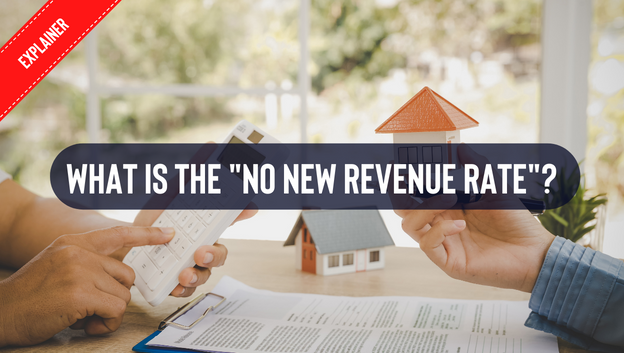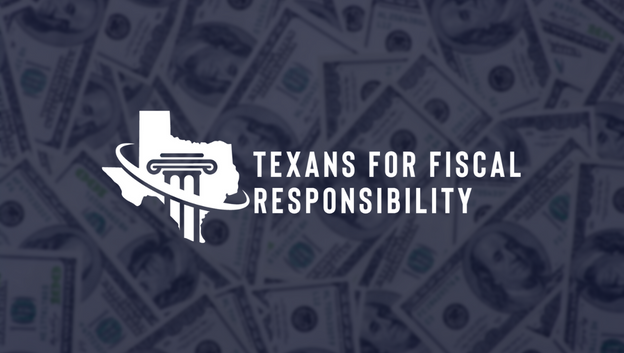
In a year that has resulted in crushing property tax burdens for the majority of Texans, Texans for Fiscal Responsibility (TFR) has set its sights on giving as much transparency to the property tax process in Texas as possible. Most Texas taxpayers have already protested their appraisals, and the question we most often get is… Now what?
In a recent Senate Finance Committee hearing, state lawmakers talked about this problem and came to the conclusion that taxpayers are going to have to wait for relief after receiving historically high appraisals. After Senators acknowledged that property tax burdens are unsustainable at their current levels, and after spending time defending their “historic property tax reform” in 2019 (which did nothing to lower anyone’s bills), they said taxpayers will have to wait on local political subdivisions to lower to the “No New Revenue Rate“. This was a term that was redefined in the 2019 property tax relief bill, yet most taxpayers have no clue what it is.
The comptroller’s website defines the No New Revenue Rate as:
The no-new-revenue tax rate enables the public to evaluate the relationship between taxes for the prior year and for the current year, based on a tax rate that would produce the same amount of taxes if applied to the same properties taxed in both years.
To do this, several adjustments must be made. Those adjustments are found in Section 1 of the Comptroller’s tax rate calculation worksheets. The formula assumes that if values increase, the tax rate should decrease to create the same amount of revenue as it did the year before, or if values decrease, the tax rate will increase to produce the same amount of revenue.
The No New Revenue Rate is essentially the tax rate that would produce the same revenue as the prior year for a particular political subdivision. In a year with sky-high appraisals, this should result in a significantly lower rate to offset the increased revenue caused by inflated home appraisals.
Who Determines What This Rate Is?
Let’s take a quick look at the process for adopting a tax rate for school districts according to the Texas Association of School Boards:
- Propose budget: Texas Education Code section 44.002 requires the superintendent to prepare or cause to be prepared a proposed budget by a date set by the State Board of Education:
• Districts with a July 1 fiscal year (July 1 districts): June 19.
• Districts with a September 1 fiscal year (September 1 districts): August 20. - Calculate tax rates: By July 25, the chief appraiser must prepare and certify to the district’s tax assessor the appraisal roll of the district’s taxable property value. If the appraisal review board has not approved the appraisal records by July 20, the chief appraiser must prepare and certify to the tax assessor an estimate of the district’s taxable property value by July 25. On receipt, the assessor determines the total appraised value, total assessed value, and total taxable value of property in the district, and submits the appraisal roll to the board by August 1 or as soon thereafter as practicable. After the assessor submits the appraisal roll to the board, an officer or employee designated by the board calculates the district’s no-new-revenue tax rate and voter-approval tax rate (VATR) using tax rate calculation forms prescribed by the comptroller.
- Plan and publish notice of the budget and proposed tax rate meeting: When the budget has been prepared, the president calls a meeting of the board to adopt the budget. The president also provides for publication of the Notice of Public Meeting to Discuss Budget and Proposed Tax Rate. At least 10 but not more than 30 days before the date of the hearing, the district must publish the Notice of Public Meeting to Discuss Budget and Proposed Tax Rate.
- Post a summary of the proposed budget: At the time the Notice of Public Meeting to Discuss Budget and Proposed Tax Rate is published, the district must post a summary of the proposed budget on the district’s website or at the central administrative office if the district has no website.
- Post notice under the Texas Open Meetings Act (OMA): At least 72 hours before the public meeting, a district must post notice of the meeting in accordance with the OMA. If a board plans to adopt the budget and tax rate at the same meeting, the meeting notice must list separate agenda items for the budget and tax rate, in that order. The board may also
conduct any other business properly posted under the OMA at the meeting. - Hold the public meeting: After giving notice of the public meeting, the board holds the meeting to discuss the budget and proposed tax rate. Any taxpayer in the district may be
present and participate in the meeting. The board may hear public comments, discuss, and then vote to adopt the budget and tax rate in the same public meeting if properly posted
under the OMA. Although some boards hold separate meetings to take public comments (a “public hearing”) and then adopt the budget or tax rate, separate meetings are not required. - Adopt the budget: The board must adopt the budget before the tax rate. Thus, if the two are being adopted at the same meeting, the board must vote to adopt the budget, and then,
in a separate vote, adopt the tax rate. - File the budget with TEA: After adoption, the district must file the budget with TEA through PEIMS
- Post the adopted budget: The final adopted budget must be posted on the district’s website. The website must prominently display the electronic link to the adopted budget. The district must maintain the adopted budget on the website for three years after adoption. The statute does not address posting requirements for amendments to the budget.
- Adopt the tax rate: The board adopts a tax rate by order, ordinance, or resolution. The vote must be separate from the vote adopting the budget.30 [TASB Legal Services’ offers sample resolutions.] As stated previously, the board may adopt the budget and tax rate, in that order, at the same meeting.
This long confusing process is the way in which we get our school Maintenance & Operations (M&O) and Interest & Sinking (I&S) property tax rates (about 70-75% of your property tax bill). What taxpayers should focus on next is the important date of July 25th. This is the date on which the chief appraiser must submit the taxable value of the district, which determines what the No New Revenue Rate and the Voter Approval Rate (the rate which triggers voter approval) will be accordingly.
TFR urges taxpayers to familiarize themselves with the process and plan on attending the public meeting (section 6 above). It is at this meeting that taxpayers should implore their local elected officials to adopt the no new revenue rate. This is the first step in reigning in our out-of-control local government spending and is the best chance that taxpayers have to see their school property taxes come down from that monstrous amount you saw in your appraisals this Spring.
After rates are set we still have our work cut out for us going into the next legislative session set to begin in January of 2023. This is why TFR recently debuted its Texas Prosperity Plan, which focuses on banning the practice of taxpayer-funded lobbying, eliminating property taxes, and freezing our state budget growth.
We believe this plan would continue to put Texas’ fiscal future on a great footing and ensure prosperity for current and future generations of Texans.
How can you help? Go read the Texas Prosperity Plan for yourself and voice your support for REAL property tax relief by signing up to support the TPP. Sign up for The Fiscal Note to keep up to date on all fiscal issues that affect Texans, especially our broken property tax system. We CAN get real tax relief if we amplify our voices loud enough.




